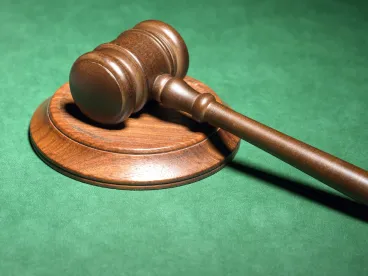Holding
In Bio-Rad Labs., Inc. v. ITC, a Federal Circuit panel affirmed the U.S. International Trade Commission’s (ITC) finding that Bio-Rad infringed patents, directed to gene sequencing technology, owned by 10X Genomics Inc. In affirming the ITC, the panel, inter alia, rejected Bio-Rad’s defense that it co-owned the asserted patents based on assignment provisions that two named inventors signed while employees of Bio-Rad and its predecessor, QuantaLife, even though the claimed inventions were not made until after that employment.
Background
In 2010, the two named inventors, Drs. Benjamin Hindson and Serge Saxonov, worked for QuantaLife, founded by Dr. Hindson. While there, they each signed an agreement to “ disclose promptly to the Company the full details of any and all ideas … that Employee conceives, develops or creates alone or with the aid of others during the term of Employee’s employment with the Company” and “(b) Employee shall assign to the Company, without further considerations, Employee’s entire right to any IP described in the preceding subsection, which shall be the sole and exclusive property of the Company whether or not patentable.”
In 2011, Bio-Rad acquired QuantaLife, and Drs. Hindson and Saxonov became Bio-Rad employees. They each signed another assignment agreement stating, “[a]ll inventions (including new contributions, improvements, designs, developments, ideas, discoveries, copyrightable material, or trade secrets) which I may solely or jointly conceive, develop or reduce to practice during the period of my employment by Bio-Rad shall be assigned to Bio-Rad.”
In April 2012, Drs. Hindson and Saxonov left Bio-Rad and formed 10X Genomics. By August 2012, 10X Genomics filed patent applications directed to gene sequencing technology using “capsule-in-capsule” and “capsule-in-droplets” architecture. By January 2013, the inventors of the asserted patents, including Drs. Hindson and Saxonov, conceived of a different architecture—“gel bead in emulsion” (GEM)—used in the claimed inventions. Alleging that Bio-Rad’s products and their uses infringed the asserted patents, 10X Genomics sued in the Northern District of California and filed a complaint in the ITC.
The ITC rejected Bio-Rad’s co-ownership affirmative defense. The Administrative Law Judge (ALJ) found that the inventors had not conceived of the inventive concept of the asserted patents before leaving Bio-Rad. The ALJ explained this finding as decisive, as the applicable contracts did not “‘govern[] future inventions’ merely because the future inventions ‘are based on or developed from work done during employment.’” On review, the full Commission agreed, finding that Bio-Rad did not co-own the asserted patents. The “ideas” Bio-Rad identified that Drs. Hindson and Saxonov worked on while at QuantaLife and Bio-Rad were too “generic” in that they did not include the specifics required by the asserted patent claims. Additionally, while at QuantaLife and Bio-Rad, the inventors worked on droplet-in-droplet architecture, not the claimed GEM architecture. Moreover, many of the identified ideas were disclosed in another patent, naming Dr. Saxonov as an inventor, assigned to Bio-Rad.
Federal Circuit
On appeal, the Federal Circuit also rejected Bio-Rad’s co-ownership theories premised on the assignment provisions in Drs. Hindson’s and Saxonov’s employment contracts. Under U.S. patent law, if Bio-Rad is a co-owner, it cannot be an infringer, because “[e]ach of the joint owners of a patent may make, use, offer to sell, or sell the patented invention … without the consent of and without accounting to the other owners.” 35 U.S.C. § 262.
Despite the asserted patent claims having a January 2013 conception date—after Drs. Hindson and Saxonov left Bio-Rad—Bio-Rad argued that it co-owned the patents based on co-inventorship, i.e., joint inventorship. Bio-Rad first asserted that if Drs. Hindson and Saxonov had ideas while at Bio-Rad or QuantaLife contributing to the post-employment inventions at issue, and if those contributions would make them co-inventors, then the assignment provisions required assignment of their co-ownership interest to Bio-Rad. Second, Bio-Rad asserted that the two inventors in fact had such co-inventorship-qualifying ideas while employed by Bio-Rad and QuantaLife. Taking each contention in turn, the Federal Circuit rejected Bio-Rad’s arguments.
Examining the assignment provisions, the Federal Circuit first found that the agreements were limited by their terms to IP created during the employee’s employment term. As to patents, the pertinent IP does not exist until at least the conception of the claimed invention. Thus, as the panel explained, such assignments cannot capture contributions, however significant, to post-employment inventions before the invention is made.
The panel further noted that state laws governing the assignment provisions supported its decision. Specifically, California law recognized “significant policy constraints on employer agreements that restrain former employees in the practice of their profession, including agreements that require assignment of rights in post-employment inventions.” Inability to determine at the time of employment whether an assignment provision covered particular subject matter weighed against broadly reading the QuantaLife and Bio-Rad contract language.
Second, the Federal Circuit panel refused to find joint inventorship where the inventors merely worked on the “overall, known problem—how to tag small DNA segments in microfluidics using droplets—that was the subject of widespread work in the art.” Moreover, many of Bio-Rad’s “ideas” were disclosed in its patent, the application for which published in December 2012, before the undisputed earliest January 2013 conception date of the asserted patents.
The panel also rejected Bio-Rad’s assertions that three ideas developed at QuantaLife were not publicly known in the art at the time Drs. Hindson and Savonov worked on them, specifically, tagging droplets, using double-junction microfluidics, and using oligonucleotides as barcodes. Bio-Rad’s arguments necessarily looked to a time before the January 2013 conception. Moreover, Bio-Rad did not deny that those ideas were in the published art by January 2013 or that by then they were readily available to the co-inventors of the asserted patents. In particular, tagging droplets used droplet-in-droplet architecture, which was materially different than the claimed GEM architecture. Bio-Rad’s expert also admitted such tagging was disclosed in the art, including in Bio-Rad’s patent. The art likewise described using double-junction microfluidics, and one asserted patent similarly suggested using oligonucleotides as barcodes was publicly known.
Takeaway Lessons
Bio-Rad reaffirms that conception—formation of a definite and permanent idea of the complete and operative claimed invention—is the touchstone of inventorship, despite significant, earlier contributions to the invention borne from work on an overall known problem. The decision similarly highlights that joint inventors must do more than merely explain to the true inventors well-known concepts or the state of the art. Finally, while companies may freely arrange their business dealings through employment agreements, Bio-Rad informs practitioners that courts may not read assignment provisions broadly when doing so may impede former employees from pursuing future work in a similar field.



 />i
/>i
